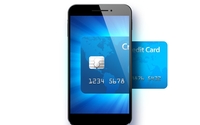 As I tapped my iPhone 6 at a checkout register while making a
quick purchase at a convenience store over the weekend, it again struck me the distance this process still has to go.
As I tapped my iPhone 6 at a checkout register while making a
quick purchase at a convenience store over the weekend, it again struck me the distance this process still has to go.
The beauty of using NFC in the iPhone is that no app or anything else has
to be loaded, it just takes a quick tap of the phone to the terminal where credit cards are routinely swiped.
Of course, that means the particular checkout hardware has to be one that takes
Apple Pay.
On my phone, the thumbprint read again didn’t work, even after deleting and rescanning it a couple of times recently. That means having to use the passcode, which isn’t
really difficult to type a four-number code, although it does then take an extra step.
Another issue is that after the phone payment is accepted, I still had to identify on the store’s
point-of-sale screen that it was a credit card payment.
advertisement
advertisement
Even though my American Express card is linked to Passbook, sending me an instant notification identifying the store and the amount just
charged, the cashier still handed me a paper receipt along with my one-item purchased.
In other stores where I paid by phone, either by Apple Pay or by Softcard on my Samsung Galaxy S4, I was
handed a small slip of paper to sign.
None of this seems to make it easier to use a phone over a simple credit card swipe, since all the touch payments are doing is essentially mimicking a
credit card, except with a phone (yes, and of course the added security features).
There are other approaches in the market and coming in the future that use codes on screens for payments.
Those approaches typically integrate other things with the payments, such as loyalty cards and coupons.
Technically, tap-to-pay is starting to work quite well in many places. But then again,
so is swipe to pay.
______________________________________
Want more beacon info? Check out the coming MediaPost IoT: Beacons conference agenda for Chicago Feb. 10.